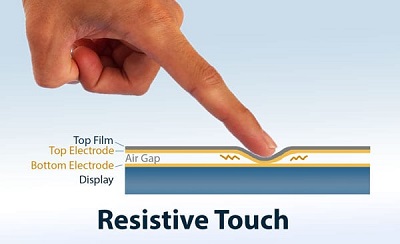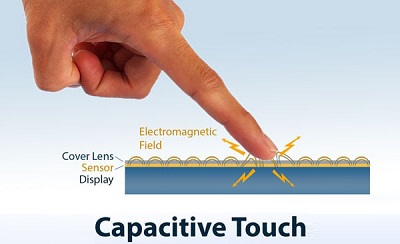In the realm of modern digital devices, touch display technology has undoubtedly become the critical bridge for human-machine interaction. As two mainstream solutions, resistive touch panels (RTP) and capacitive touch panels (CTP) operate on different principles, each boasting distinct advantages and drawbacks. So, which one best suits your application scenario? Let’s delve deep and find out.
Decoding the Working Mechanisms
Resistive touch screens consist of two transparent conductive layers separated by a microscopic air gap. When a finger or stylus presses the screen, the two layers make contact, causing a change in resistance. The touch controller detects this variation and calculates the pressure coordinates.
On the other hand, capacitive screens leverage the principle of capacitive coupling between the human body and the screen surface. When a finger approaches or touches the screen, a minute change in capacitance occurs, allowing the controller to pinpoint the touch location.

Distinct Advantages Unveiled
Resistive screens boast exceptional versatility, as any object capable of exerting pressure can activate the touch input, even when wearing gloves or in the presence of liquid spills. Thanks to their relatively simple structure, they offer a lower cost compared to capacitive screens, making them ideal for harsh environments like agricultural equipment and marine applications.
Capacitive screens, however, support multi-touch input, enabling smooth and natural gesture-based operations akin to smartphones. In multi-player gaming, conference presentations, and more, they can even recognize over 10 simultaneous inputs, delivering unparalleled operational fluidity. Additionally, their calibration-free nature and high precision are notable advantages.

Potential Drawbacks to Consider
Resistive touch screens cannot support multi-touch input, and their top plastic film layer compromises optical clarity and scratch resistance compared to glass screens. Temperature fluctuations can also affect their accuracy. Over extended use, the film may degrade, necessitating periodic recalibration or replacement.
While capacitive screens excel in user experience and multi-touch capabilities, they cannot recognize non-conductive objects like pencils. Furthermore, their higher price point may not align with budget constraints for cost-sensitive applications.
In summary, both touch technologies have their strengths and weaknesses. Businesses must carefully evaluate their specific application scenarios, usage environments, cost budgets, and other factors before making an informed choice. Regardless of the selected technology, high-quality products and technical support from professional display module suppliers will be the key to ensuring an exceptional touch experience for your end devices.
Elevate Your Touch Experience with RJY Display:
Chez RJY Display, we understand the nuances of touch display technologies and their impact on user experiences. Our team of experts is dedicated to guiding you through the selection process, ensuring you choose the ideal solution tailored to your unique requirements. With a wide range of resistive and capacitive touch panels, cutting-edge engineering, and unwavering commitment to quality, we empower businesses to deliver unparalleled touch interactions. Contact us today and let’s embark on a journey to revolutionize your touch display offerings.